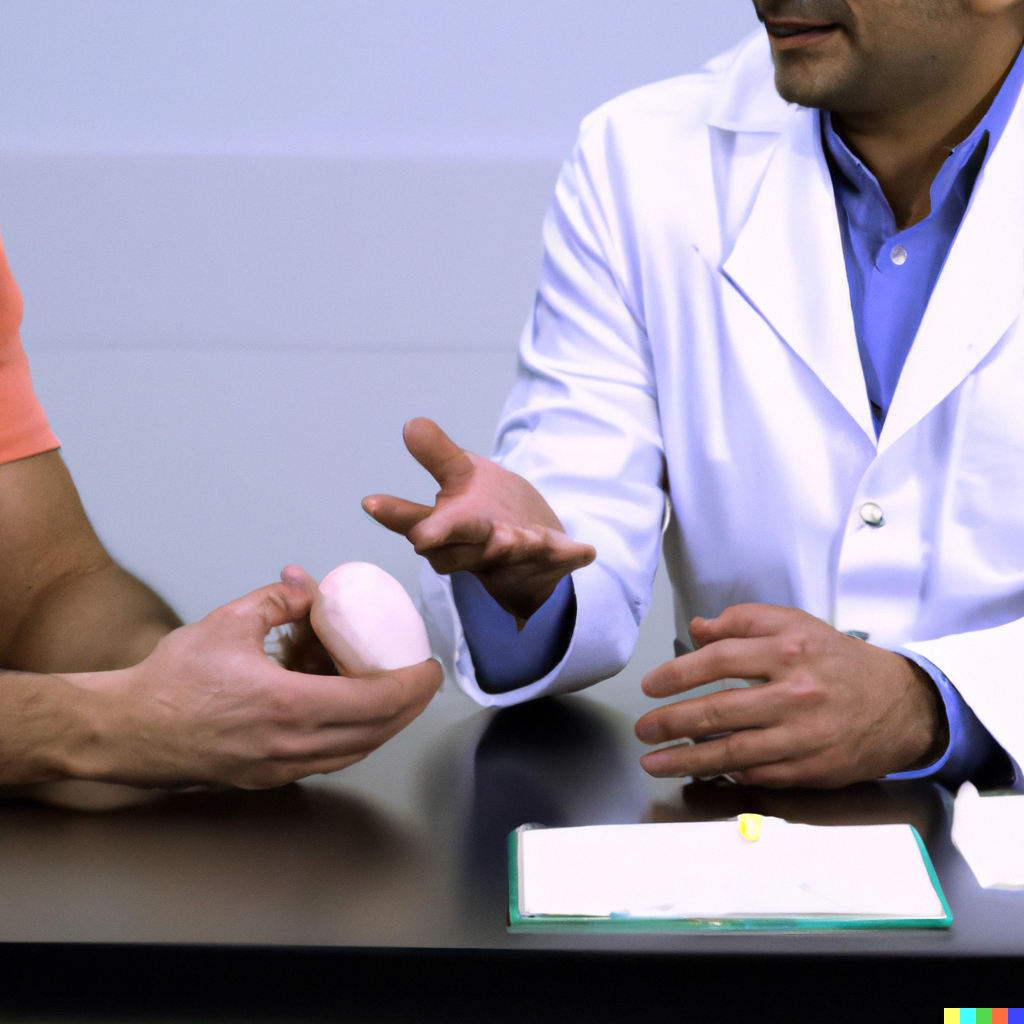Kidney Stones: Kidney stones are one of the most common types of urinary tract stones. They are formed in the kidneys and can cause pain in the lower back or side. The pain can also radiate down to the groin. Other symptoms of kidney stones include nausea, vomiting, and changes in urine color or odor.
Kidney stones are hard, crystal-like deposits that form in the kidneys. They are made up of minerals and salts that have combined in the urine. The stones can range in size from a grain of sand to a golf ball and can cause severe pain and discomfort as they pass through the urinary tract.
Kidney stones form when the levels of minerals and salts in the urine become too high. The excess minerals and salts can stick together and form stones. Certain factors can increase the risk of developing kidney stones, such as not drinking enough fluids, having a family history of kidney stones, and certain medical conditions such as gout or digestive diseases.
The symptoms of kidney stones can vary, but common symptoms include intense pain in the lower back or side that radiates to the groin, nausea, vomiting, and frequent urination. The pain can be intense and may come in waves as the stone moves through the urinary tract. Other symptoms can include cloudy or bloody urine and a strong urge to urinate. Usually however, these are due to a kidney stone that is passing though the urinary tract, through the ureters. When a stone is forming in the kidney, it may not be painful at all, as it is not obstructing the flow of urine from that kidney. However, once it starts descending into the ureter, which is the tube that connects the kidney and bladder, it can get stuck. This leads to a blockage of urine somewhat rapidly, which leads to the typical sort of intense pain that is associated with kidney stones. The way the kidney tract is set up, it is larger near the kidney but tapers in the ureter, which is why stones get stuck and pain ensues.
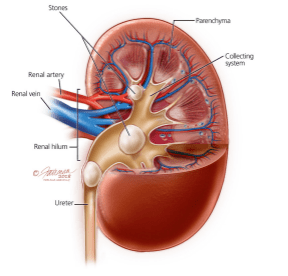
From urologyhealth.org
A healthcare provider can diagnose kidney stones through a physical exam and medical history, as well as imaging tests such as an X-ray, CT scan, or ultrasound. In some cases, a sample of the stone may be collected and analyzed to determine its composition and help determine the cause of the stones.
Treatment for kidney stones depends on the size and location of the stones, as well as the severity of symptoms. In some cases, drinking plenty of fluids and taking over-the-counter pain medication can help pass the stones. In other cases, minimally invasive procedures such as ureteroscopy or ESWL may be necessary to remove the stones. In cases with very large stones in the kidney, a percutaneous approach with a small incision in the back may be necessary, and in the most severe cases sometimes the collecting system needs to be opened to remove the stone burden.
Treatment Modalities:
Ureteroscopy: Ureteroscopy is a minimally invasive procedure that is used to remove stones from the urinary tract. During the procedure, a small, flexible scope is inserted through the urethra and into the bladder, where it is then guided up the ureter to the location of the stone. The stone is then removed using a laser or other tool.
Extracorporeal Shockwave Therapy (ESWL): ESWL is a non-invasive procedure that uses shockwaves to break up stones in the urinary tract. The shockwaves are generated outside of the body and are directed at the stone, causing it to break into smaller pieces that can be more easily passed through the urinary tract.
Percutaneous Nephrostolithotomy (PCNL): PCNL is a minimally invasive procedure that is used to remove stones from the kidney. During the procedure, a small incision is made in the back and a scope is inserted into the kidney to locate and remove the stone.
Ureteral Stents: A ureteral stent is a small tube that is inserted into the ureter to help alleviate pain and discomfort caused by ureteral stones. The stent helps to keep the ureter open and allows urine to flow freely, reducing the risk of infection and further complications. Depending on the situation, a Urologist may need to place a stent first to treat an infection, alleviate an obstruction, allow for the ureter to dilate enough to treat a stone, or allow for the ureter to heal.
Pain with Ureteral Stent: Although a ureteral stent is meant to relieve pain caused by ureteral stones, some patients may experience pain or discomfort with the stent in place. This can be caused by the stent pressing against the bladder, ureter, or surrounding tissues. Pain may also be caused by irritation or infection in the urinary tract.
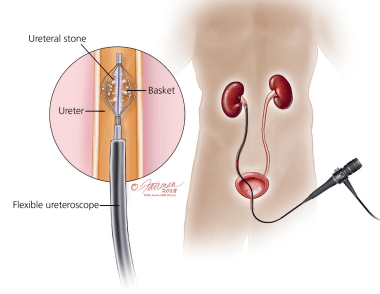
Ureteroscopy (from urologycare.org)
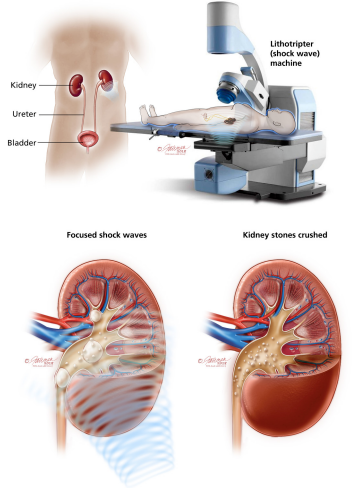
Shockwave Lithotripsy (from urologycare.org)
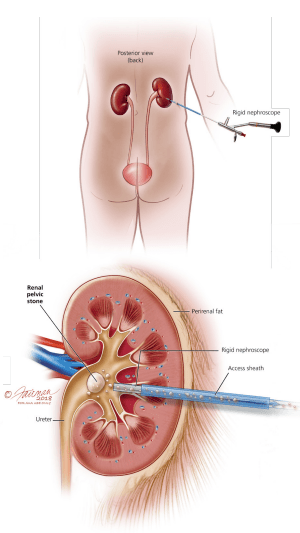
Percutaneous Nephrostolithotomy (from urologycare.org)
Ureteral Stones: Ureteral stones are stones that form in the ureters, which are the tubes that connect the kidneys to the bladder. Symptoms of ureteral stones can include severe pain in the lower abdomen, back, or side, as well as frequent and painful urination.
Ureteral stones form in much the same way as kidney stones. They occur when the levels of minerals and salts in the urine become too high and stick together to form a stone. Factors that can increase the risk of developing ureteral stones include not drinking enough fluids, having a family history of kidney stones, and certain medical conditions such as gout or digestive diseases. They can form in the ureters, though most often they form in the kidneys and fall into the ureters.
The symptoms of ureteral stones can include intense pain in the lower back or side that radiates to the groin, nausea, vomiting, and frequent urination. The pain can be intense and may come in waves as the stone moves through the urinary tract. This pain can be horrific, and it is known as renal colic. Renal colic can be one of the most intense pains a person can experience. Other symptoms can include cloudy or bloody urine, vaginal or testicular pain or discomfort, and a strong urge to urinate.
Treatment options are ureteroscopy and ESWL, though ESWL generally is not nearly as effective once the stone has fallen into the ureter. It can be performed if the stone is pushed back up into the kidney, however.
It is not uncommon to need a stent after a procedure for either kidney or ureteral stones. A ureteral stent is a small tube that is inserted into the ureter to help alleviate pain and discomfort caused by ureteral stones. The stent helps to keep the ureter open and allows urine to flow freely, reducing the risk of infection and further complications.
Although a ureteral stent is meant to relieve pain caused by ureteral stones, some patients may experience pain or discomfort with the stent in place. This can be caused by the stent pressing against the bladder, ureter, or surrounding tissues. Pain may also be caused by irritation or infection in the urinary tract.
Bladder Stones: Bladder stones are stones that form in the bladder. Symptoms of bladder stones can include pain or discomfort while urinating, as well as frequent urination or difficulty starting or stopping the flow of urine. A bladder stone is usually the result of a problem evacuating urine from the bladder, and resulting sediment of urine leading to stone formation. This usually means that the reason for obstruction (most of the time this is the prostate but it can also be because of scar tissue in the urinary tract) needs to be alleviated. Please click here for more information [link to BPH].
Preventing Urinary Stones: To prevent urinary stones, it is important to drink plenty of fluids, especially water, to help flush out any minerals or other substances that may form stones in the urinary tract. Other preventative measures include limiting your intake of salt and animal protein, and taking medications or supplements as prescribed by your doctor. Stay hydrated: Drink plenty of water (at least 2-3 liters per day) to help flush out the substances that can form stones in the kidneys.
-
Limit your salt intake: High salt intake can increase the amount of calcium in your urine, which can lead to kidney stones.
-
Limit your animal protein intake: Animal protein such as red meat, poultry, and fish can increase the amount of uric acid in your urine, leading to the formation of uric acid stones.
-
Eat a balanced diet: Include a variety of fruits, vegetables, and whole grains in your diet to help regulate the amount of calcium, oxalate, and phosphorus in your urine.
-
Flat leafy greens contain oxalates, which are naturally occurring compounds that can form calcium oxalate stones in the kidneys. The relationship between flat leafy greens and urinary oxalate is one of increased risk of developing kidney stones in some individuals.
Oxalates bind with calcium in the urine to form calcium oxalate stones. Consuming large amounts of flat leafy greens such as spinach, chard, and beet greens can increase the amount of oxalates in the urine and increase the risk of kidney stone formation.
Here is a list of some high-oxalate foods:
-
Spinach
-
Beet greens
-
Swiss chard
-
Rhubarb
-
Sweet potatoes
-
Nuts (such as almonds, peanuts, and pecans)
-
Soy products (such as tofu, soy milk, and tempeh)
-
Dark chocolate
-
Black tea
-
Wheat bran
-
Okra
-
Figs
-
Berries (such as blackberries, raspberries, and strawberries)
It's important to note that everyone's tolerance for oxalates may be different, and the impact of these foods on the formation of kidney stones may vary. It's also essential to keep a balanced diet and drink enough water to help reduce the risk of kidney stone formation.
However, not everyone who eats flat leafy greens will develop kidney stones. Other factors, such as hydration levels, dietary habits, and medical conditions, can also contribute to the development of kidney stones.
5. Lemon juice has been traditionally recommended as a remedy for preventing kidney stones due to its high citric acid content. Citric acid helps to prevent the formation of kidney stones by increasing the levels of citrate in the urine.
Citrate helps to prevent the formation of kidney stones by binding with calcium in the urine, creating a less favorable environment for stone formation. This binding action can help to reduce the concentration of calcium in the urine, making it less likely that stones will form.
Additionally, drinking lemon juice can also increase the overall volume of urine, which can help to flush out substances that can contribute to kidney stone formation.
6. Limit your sugar intake: High sugar intake can increase the amount of calcium in your urine, leading to the formation of stones.
7. Control your weight: Being overweight or obese increases the risk of developing kidney stones.
8. Manage medical conditions: Treat any underlying medical conditions such as gout or urinary tract infections that may increase the risk of developing stones.
Dr. Patel has been treating stones of various sizes for over a decade in one of the busiest hospitals in Central Florida. Please call to make an appointment should there be any concerns about kidney stones and treatment.
